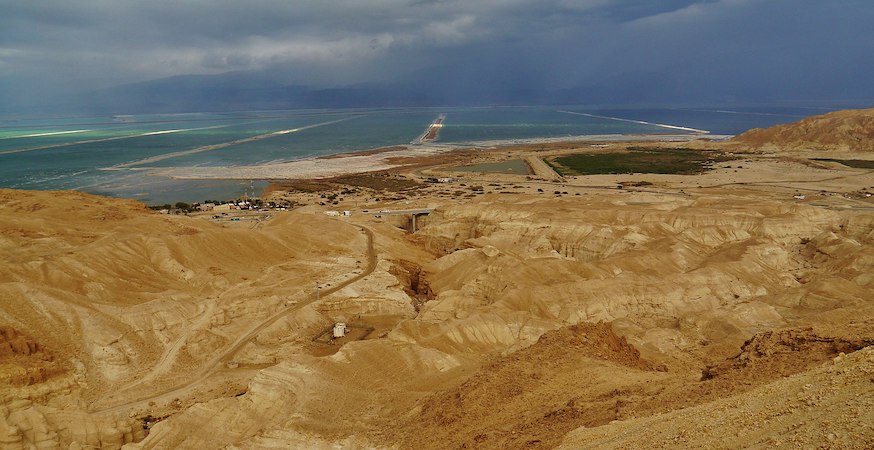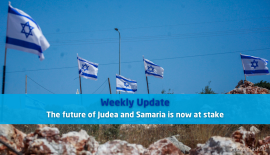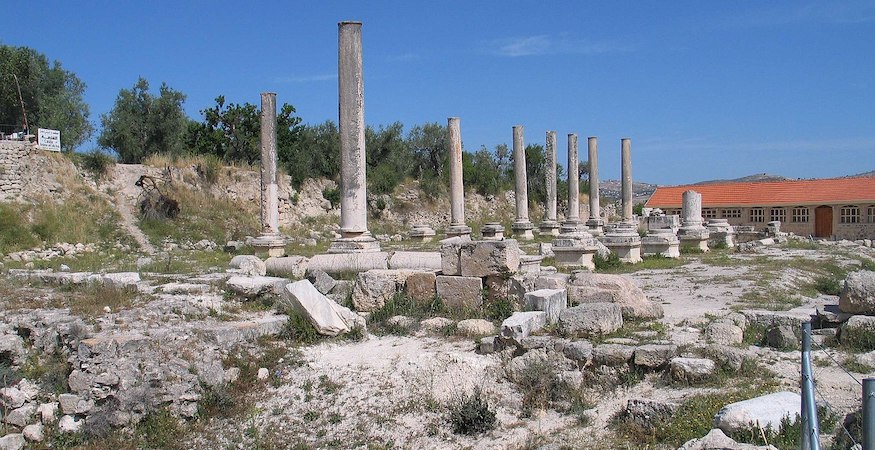The Heart of the Bible
The Lord said to Abram after Lot had parted from him, “Look around from where you are, to the north and south, to the east and west. All the land that you see I will give to you and your offspring forever. Genesis 13:14-15
But the land you are crossing the Jordan to take possession of is a land of mountains and valleys that drinks rain from heaven. It is a land the Lord your God cares for; the eyes of the Lord your God are continually on it from the beginning of the year to its end. Deuteronomy 11:11-12
So, you are going on a holy land Bible tour, but time is short. If you could only visit one region and learn more about the Bible, where would it be? Well, the topic of this ‘Walk through the Land’ is the place to go.
“It is a land the Lord your God cares for; the eyes of the Lord your God are continually on it from the beginning of the year to its end. Deuteronomy 11:11-12”
The land of the Bible can arguably be called the navel of the world. It sits at the intersection of the great Afro-Eurasian landmass and serves as its ‘land bridge.’ Its location ensures great international attention, past and present.
Yet there’s more. This land is central because the eyes of the Lord are upon it from the beginning to the end of the year (see verses above).
If this centrally located land has a ‘heart,’ especially from a geographic and Biblical perspective, it has to be the region known as ‘the Central Hill Country’ (CHC). Also known as ‘Judaea and Samaria,’ though most of the world calls it the ‘West Bank,’ a term coined since the 1948 War. For in this region lies the stage of many key Bible events, particularly in the Old Testament.
This will be the final part of our series, ‘Walk through the Land.’ We have already covered the coastal region, including the Plains of Philistia, Sharon, Acre/Asher. Also, we examined the Sea of Galilee, the region of Galilee, Mount Carmel, and the Valley of Armageddon.
We have not covered: The strategic Shephelah (lowlands) between Philistia and the Judean mountains, the great southern desert called the Negev, the Rift Valley and its subsections, and Transjordan, including Golan, Gilead, Ammon, Moab, and Edom. We may visit these sometime in the future.
On the surface, CHC looks like one and the same region, especially since the hills are nearly all made of limestone, but there are distinct variations that have affected Biblical history. Let’s see how the Central Hill Country (CHC) is the heart of the matter.
Samaria and the Northern Kingdom
The CHC resembles the letter ‘B’ upside down and backwards. Samaria is the larger region to the north and Judaea to the south. Samaria covers an area 80 by 40km and can be subdivided into three parts, north to south: Manasseh, Ephraim, and Benjamin.
One of the key differences between Judaea and Samaria is that the latter is more open and accessible than its southern counterpart. This meant it was more vulnerable to foreign invasion. Also, as the centre of the Northern Kingdom of Israel, Samaria’s openness made it more unstable. It had two heathen shrines at Bethel and Dan, three different capitals: Shechem, Tirzah, and the city of Samaria, and at least 6-8 dynasties. Having the capital in the city of Samaria made the Northern Kingdom fully open to the cultural, political and religious influences of the West (1 Kings 16:29-34), rendering it more cosmopolitan yet insecure.
“One of the key differences between Judaea and Samaria is that the latter is more accessible than its southern counterpart. This meant is was more vulnerable to foreign invasion”
The famous Biblical city of Shechem is located here. Mentioned 63 times exclusively in the Old Testament – Shechem really is the ‘navel’ of the Samaria. Sandwiched between Mount Ebal (940m), the ‘mountain of cursing’ on the northside, and Mount Gerizim, the ‘mountain of blessing’ (881m) on the southside, Shechem is important in Genesis, Joshua, Judges, and 1 Kings. Nearby eastward is Sychar, the location of Jacob’s Well, where Jesus first revealed Himself as Messiah to the Samaritan woman at the well in John 4. Down the road from Shechem westward was the city of Samaria, capital of Israel, where the kings Ahab to Hoshea reigned.
South of Shechem in the region of Ephraim is Shiloh, Israel’s first capital and home of the tabernacle and ark of the covenant for 369 years.
South of Shiloh, in Benjamin’s subsection, is located Bethel, ‘House of God,’ where Jacob saw the ladder from heaven and Jeroboam placed the golden calf. Other Biblical sites are Gibeah, Geba, Gibeon, and Mizpah. This area, along with Jerusalem, was probably the busiest region for Biblical events.
“Judaea was the stage for God’s revelation and redemption. It is Israel’s capital territory and hosted the Southern Kingdom of Judah”
Judaea: Israel’s Capital Territory
Judaea was the stage for God’s revelation and redemption. It is Israel’s capital territory and hosted the Southern Kingdom of Judah. Judaea, 40 by 32km, can be divided in half: west is the hill country, forested, green, with cool, moist Mediterranean air and rain. The east side is the wilderness; the contrast between the two couldn’t be greater. The mountains are high enough to receive occasional snow and adequate rain (500 to 700mm). Wonderful agriculture was found here, including wheat, barley, olives, grapes, pomegranates, sheep, donkeys, camels, and livestock. Key cities are Hebron, Bethlehem, and the crown jewel, Jerusalem.
The Judean wilderness and Rift Valley are to the east; the contrast in height is striking: 760 to 915m above sea level to the Dead Sea, 400m below sea level. In just 16 km, as the crow flies, the descent is 1310m. The rainfall is 100mm. Judaea’s wilderness influenced the lives of David, Amos, Jeremiah, and, of course, Jesus of Nazareth.
Hopefully, this short introduction to redemption’s stage will stir your interest in visiting the heart of the Bible. You’ll never read God’s Word or the newspaper the same again!







